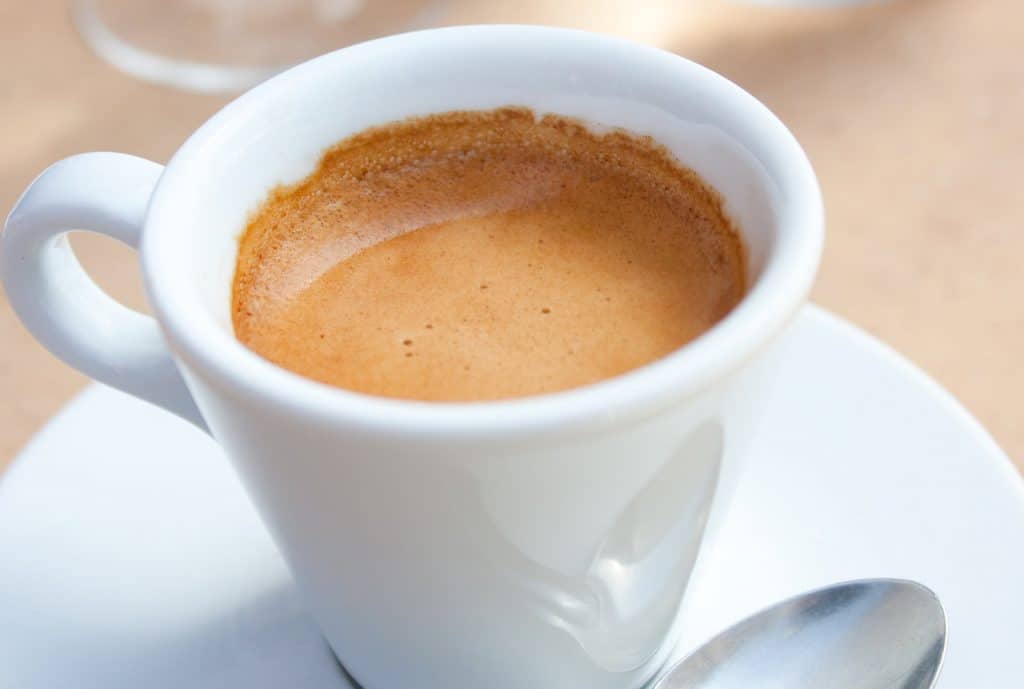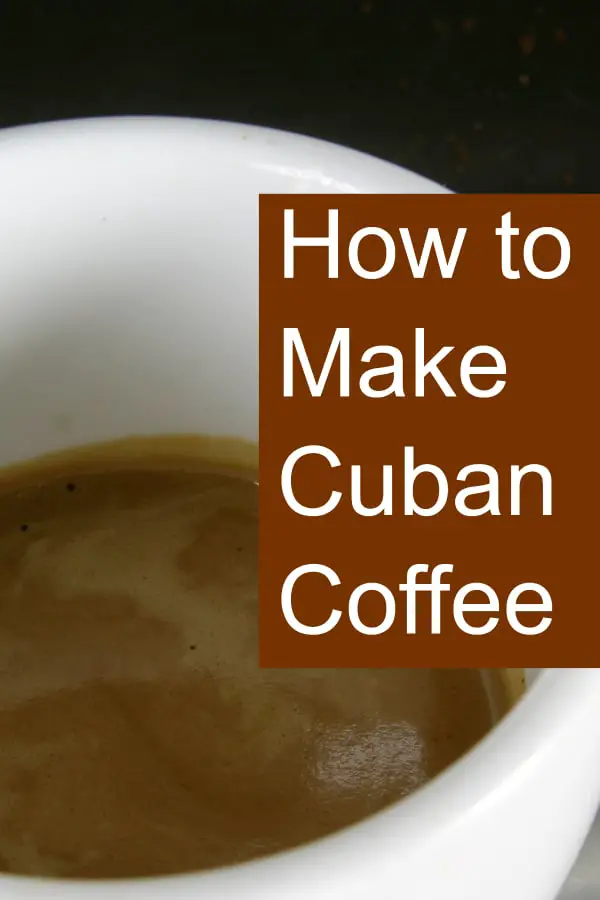Imagine yourself on Havana’s streets, sitting in an outdoor café, watching classic cars rolling by, and sipping a Cuban coffee.
It’s an idyllic scene, but you’re not in Cuba. Luckily for you, it’s absolutely possible and fairly simple to bring Cuba’s taste into your morning routine at home.

How Do You Make Cuban Coffee?
To begin with, you’ll fill the bottom part of a 6 cup Moka pot with cold water. Take the funnel and fill it with the expresso. Level off the top, but take care not to smash the grounds too much.
Screw on the top and heat over low heat. When the coffee begins to fill up the upper reservoir, pour out a few drops and whisk in with your desired amount of sugar in a tall glass container.
Continue stirring vigorously until it forms a creamy paste. This paste is the espuma or espumita, and you want the color to be a pale beige when it’s ready to combine with the expresso.
Continue to brew the remaining coffee. Once it has finished, pour the coffee into the sugar paste and mix it well.
After that, pour the coffee into small espresso cups and enjoy!

What Makes Cuban Coffee Different?
Cuban coffee goes by many different names, so you may hear it called a Cafecito, Cuban pull, Cuban shot, or a Cuban espresso.
Essentially a Cafecito is a shot of dark roast espresso that has been sweetened with sugar. Most traditionally using natural brown sugar, it is whipped into a paste with the first few drops of the expresso and mixed in with the coffee. This process is called espuma or espumita, and it’s what sets it apart.
The result is slightly more viscous than merely adding sugar to your coffee (Does sugar, cream, or milk counteract caffeine when added to coffee?). This is because whipping the sugar with the heated coffee drops will hydrolyze it, creating a thicker consistency.
Drinking espresso is an important cultural and social activity in Cuba and Cuban communities within the United States. You won’t walk into a household in the country without being offered a caffeinated beverage.
Interestingly, although the Cuban pull originated in Cuba, it isn’t typical for the locals there to drink theirs with the signature sweet espuma these days.
What is Cuban Coffee Made of?
Cuban coffee is made of dark roast espresso and sugar (usually natural brown sugar) whipped with the most potent coffee drops.
Coffee wasn’t grown in Cuba until the mid-1700s. At the time, the Haitian Revolution was taking place, sending French coffee growers to Cuba, seeking refuge from the turmoil.
Coffee production continued to grow rapidly into the 1950s. After the Cuban Revolution, the farms that grew the coffee were nationalized, and production started to taper off. In the late twentieth century, the Soviet Union helped Cuba boost coffee production but fell again in the ’90s after the Union’s fall.
Coffee stayed a way of life over the years and remains significant in the culture today. You can still find ruins of the French plantations in Cuba.

Can You Make Cuban Coffee in a Regular Coffee Maker?
It won’t be a traditional Cafecito if you’re making it with a standard coffee maker (drip coffee vs percolator), but it can still be delicious. If you want to make this Cuban treat the right way, you’ll want to start with some dark roast coffee beans.
Grinding your own beans will result in the freshest, boldest taste, but you can easily buy coffee that is already ground if you don’t own a coffee grinder. Some of the most well-known and popular brands are Café Bustelo, Café La Llave, or Café Pilon.
Do You Need a Moka Pot to Make Cafecito?
To make it the traditional way, you’ll want to use a Moka pot. This is a stove-top espresso maker that boils water and passes it through the coffee into the top chamber.
The pressure from a Moka pot (either stainless steel or aluminum) isn’t as intense as a traditional espresso machine, but it still produces flavorful, heavy-bodied coffee.
If you’re in a pinch, you can make it with an espresso machine, just be sure to whip up the espuma from the first strong coffee drops.

How Much Caffeine is in Cuban Coffee?
The amount of caffeine depends on what kind of coffee you are using to make it. If you’re drinking Café Bustelo, there are 150 mg in a 12 oz cup.
There are some variations with milk if you’d like to avoid feeling jittery all day. You can make it as strong or as weak as you’d like.
Try these popular alternatives:
Cortadito
A Cortadito is like a cortado served in other Latin American countries, but this one is sweetened with sugar. This traditional sweetened espresso shot is finished off with a splash of steamed milk.
Café con Leche
A café con Leche is the traditional breakfast drink in Cuba. This version is a simple espresso with milk but without espuma. In Cuba, it’s served with buttered toast for breakfast.
Is Café Bustelo the Same as Cuban Coffee?
Café Bustelo is a dark roast Cuban style coffee, although most of the beans are not sourced from Cuba. It was started by a Spaniard who married a Cuban woman that was a coffee enthusiast. The coffee became a staple in New York after the couple moved there from Puerto Rico.
It has since been bought by multiple companies, the most recent being the JM Smucker company. While it is not 100% Cuban, it is still widely enjoyed by Cuban immigrants and hipsters alike and can be excellent in a Cafecito.

Final Thoughts
Cuban coffee has a long and rich history that you can almost taste with each sip you take. Fortunately, you don’t have to fly all the way to Cuba to get a Cortadito.
You have everything you need to enjoy a little bit of Cuban culture yourself. Whether you impress your brunch guests or keep the buzz to yourself, you won’t regret making some Cuban coffee today.

